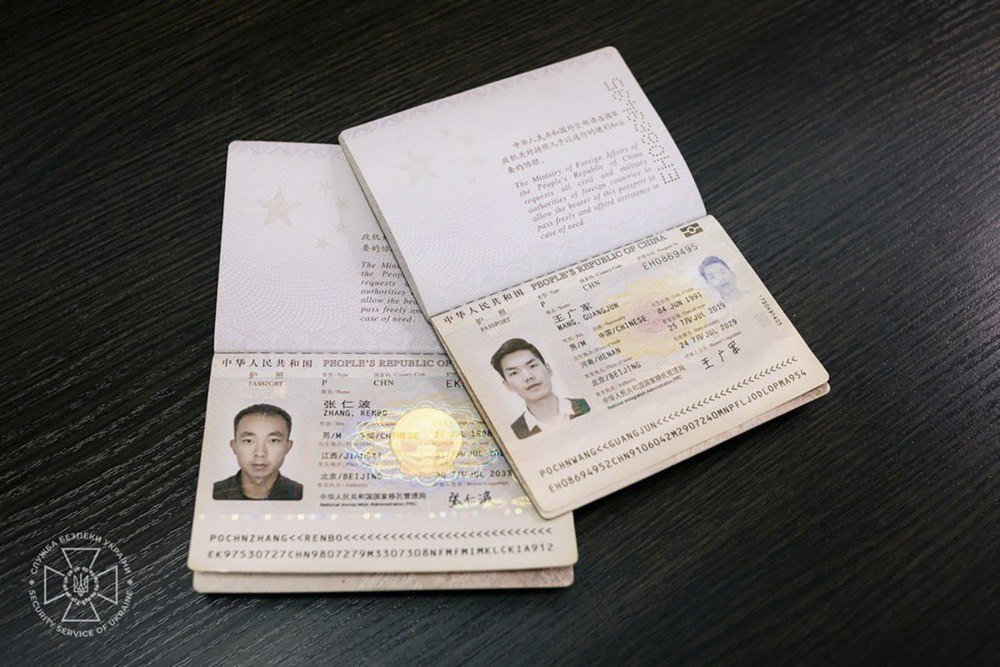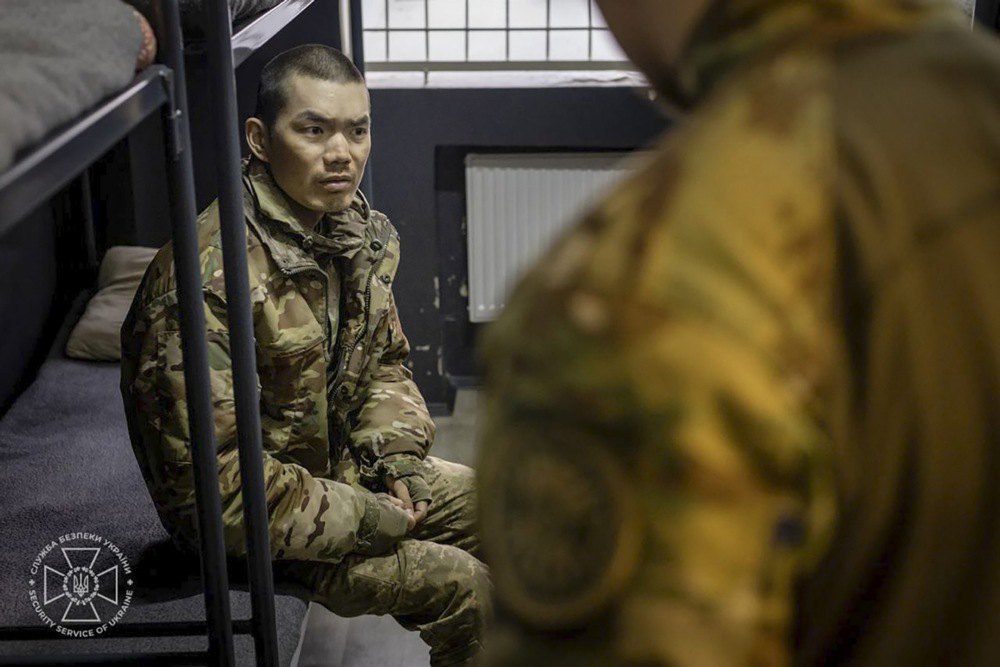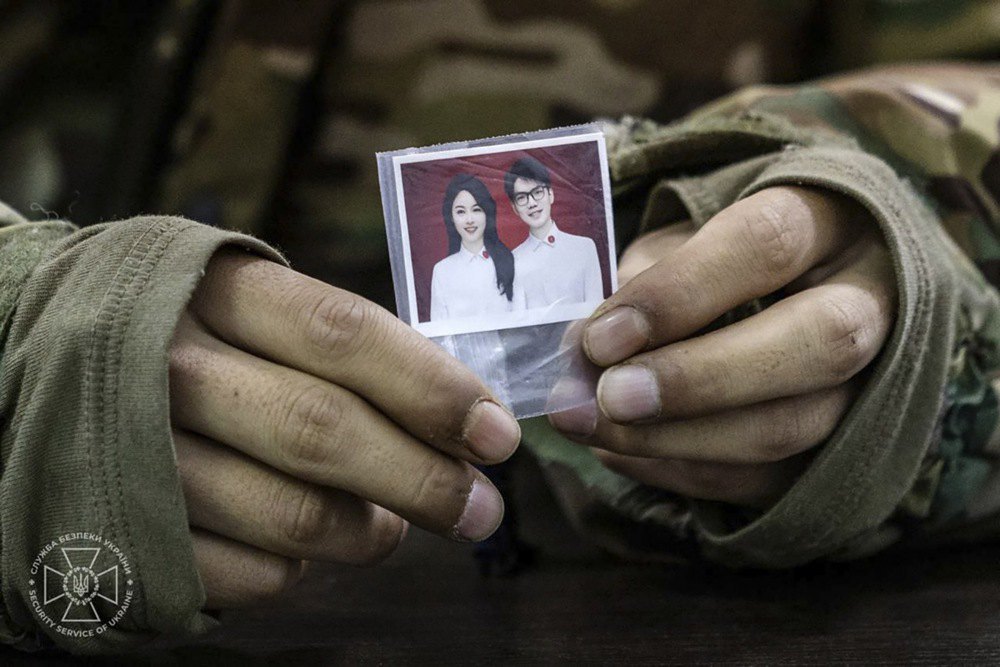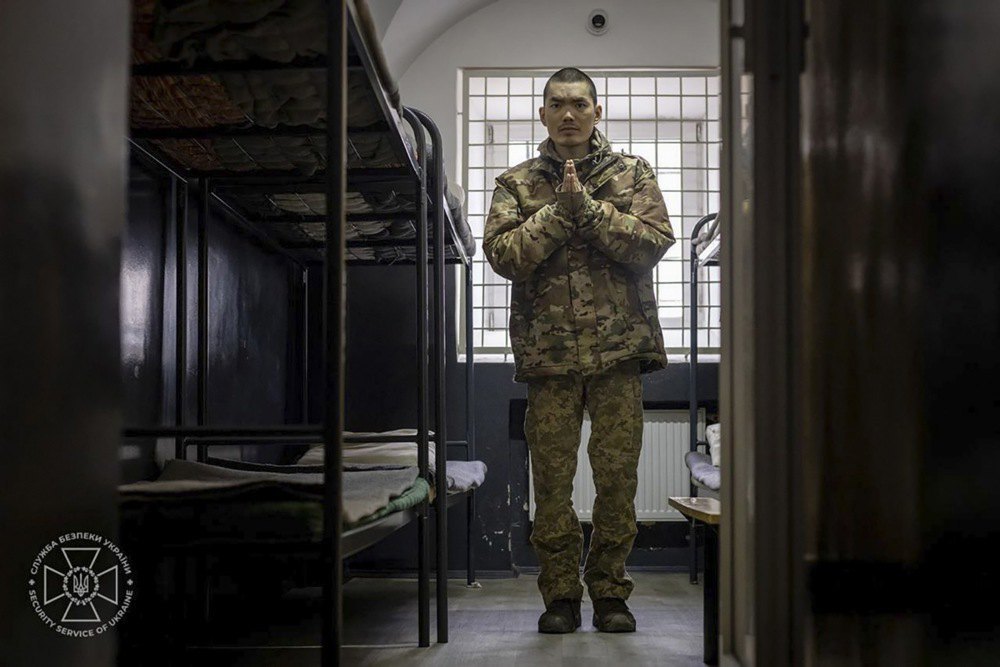
This case reeks of China’s covert involvement in the war on Russia’s side.
Volodymyr Zelenskyy posted a video of interrogations of Chinese prisoners and said that the Ukrainian authorities know for certain that 150 Chinese citizens are involved in the fighting – but that there are many more.
Everyone who follows the topic has seen the video where the captured Chinese man claims he is a petty criminal who had to go to Russia as a tourist. He wanted to obtain Russian citizenship and joined the Russian army under contract. He even paid a bribe of 300,000 roubles, in line with a long-standing Russian tradition. A separate message in this ‘tourist’s’ story stood out: “I’m not a PLA soldier” (PLA, People’s Liberation Army of China – LB.ua). And this four-word statement raised a red flag. It is strange for a tourist to focus so deliberately on this particular point in his biography.
On 8 April, the Ministry of Foreign Affairs of Ukraine summoned the Chinese Chargé d’Affaires for a conversation, and on the morning of 9 April, the aforementioned statement by the Chinese authorities was issued. The next day, a story appeared about the 300,000-rouble bribe and an attempt to break away from Chinese law enforcement. If you look at this superficially – not through counterintelligence lenses – it appears there are no Chinese military in Ukraine, and the Chinese state bears no responsibility for the actions of individual antisocial citizens. But haven’t we heard similar stories in 2014, told by Putin?
This Chinese tourist was reportedly trained in Luhansk Region along with other contract recruits, including Chinese nationals who will sing the same song in captivity about ‘changing citizenship and making money’. Again, a bell of distrust rings – why not train contract soldiers at a standard base, where everyone else trains? Why go to Luhansk Region? So far, two logical answers emerge. First: assault units are mostly trained near the front line, where they are given one-way travel vouchers. And second: the candidate is a military man who does not need basic training, but rather instruction in conditions close to actual combat.

This story now seems to have been settled – for China. The scandal with these strange prisoners, along with suspicions of direct supplies of Chinese ammunition and weapons, tarnishes the atmosphere of negotiations with the EU on jointly countering new US tariffs. In other words, Ukraine has been dealt a trump card.
In general, China is playing its own game by its own rules. On the one hand, it supplies Russia with most of the dual-use and sanctioned goods (according to the US). On the other, China is an empire unto itself and is not prepared to suffer reputational damage for the sake of gains from such operations. Since 2023, Chinese companies and banks have increasingly refused to deal with Russian businesses due to the high risk of secondary sanctions.
Let’s try to estimate the extent to which Chinese citizens are involved in the war on our enemy’s side.
In the summer of 2022, when Ukraine regained part of its territory and inflicted a series of humiliating defeats on the Russian army, Russia launched a parody of the volunteer movement. Each subject of the Russian Federation had to form a ‘volunteer battalion’. Fantastic amounts of money for Regions bleeding from a swamp economy stirred up the marginalised underclass – and this resource flowed into the ‘volunteers’.
Officially, Russians believe there are between 100,000 and 150,000 Chinese living in Russia – but estimates of five million legal and another 20 million illegal immigrants are common. In the Regions of the Russian Federation adjacent to China, it is not difficult to find places under the complete control of the Chinese community.
It is therefore logical that in the Far East and Transbaikalia, Chinese citizens who permanently reside and work there have been recruited as ‘volunteers’. It is much easier to work with illegal immigrants, so the result is clear. Each Region received a quota for recruitment and financial resources, so Chinese citizens were targeted – though initially few responded. They are, after all, smart people.

After mobilisation was announced on 21 September 2022, the process accelerated and more Chinese began signing contracts. Some were motivated by one-time payments, others by migration or criminal circumstances, and some were quite literally forced into the army to meet recruitment quotas. When the alternative is deportation or signing a contract, the choice is clear.
A separate layer of this cake is the Chinese who were placed in Russian detention centres or had come to the attention of law enforcement or the migration service. This process is quite straightforward.
Local registry offices also played their part. By law, they must inform military commissariats about changes in civil status. Chinese nationals who marry Russian women – and this is a widespread phenomenon, as Chinese men are seen as hardworking, teetotal, and a worthy alternative to the Trans-Baikal drifter en route from one prison to another – can easily fall under pressure from authorities or life circumstances, including unscrupulous employers who delay wages. When the family has no income, the authorities can ‘recommend’ to the employer whom to dismiss, depending on the Region’s ‘volunteer’ quotas.
A few words on the professional Chinese military. At the very beginning of the Great War, Chinese military observers – intelligence officers, communications specialists, infantry commanders, and staff officers – were sent to Russian headquarters to study new military technologies, tactics, weapons systems, and modern warfare. Their aim was to gain experience, test Chinese tactical developments, and observe successful practices used by both Russian and Ukrainian forces. The peak came in spring 2023, when Beijing finally understood that Russia could not defeat Ukraine and that the war would be protracted.

In 2024, Chinese representation expanded. In addition to headquarters officers (mostly at division level, occasionally at regiment level), who rarely approached the front line, small groups of officers and qualified weapons specialists began appearing directly in combat formations.
Groups of Chinese military personnel initially joined military intelligence units and took part in combat episodes. From autumn 2024 to the present day, Chinese troops have participated in small groups in battles in the Novopavlivka, Pokrovske, and Toretsk directions. The story of the North Korean prisoners revealed that such fighters often carry Russian cover documents – or none at all – and bear no formal insignia linking them to the PLA.
The total number of the Chinese military contingent in the Russian Armed Forces is estimated at about 1,000 – up to half of them are senior officers acting as military observers. It is safe to assume that these ‘tourists’ will now receive strict new instructions on how to participate in combat and what documents to carry on the front line.
All of this points to the likelihood that the prisoners captured by the Defence Forces may be members of the PLA Special Operations Forces.
Let’s return to the trump card Ukraine has been dealt. Our goal – and that of our partners – is to make it impossible for Russia to continue waging war. Therefore, the most optimistic conclusion to the story of the Chinese prisoners would be an agreement with China on Beijing’s truly neutral status in this war.








